

ustin Kirk, DPT, highlights identifying and reducing risk factors for ACL injuries. He shares who is most likely to sustain an ACL injury, the movements or position that increases an athlete’s risk for injury and the importance of limb symmetry and single leg training for preventing ACL injuries. Additionally, he offers recommendations for providers, when working with athletes at high risk, on how to reduce their risk for an ACL injury and the changes he has seen in management of ACL tears over the past 5 years.
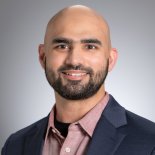
Epilepsy affects up to 2% of people, and for some patients, medications are not effective. Adeel Ilyas, M.D., a neurosurgeon, explains how referral to a Level 4 epilepsy center offers hope to patients with drug-resistant epilepsy. Learn how UAB’s multidisciplinary team, including neurologists, neurosurgeons, and neuropsychologists, uses both surgical and neuromodulatory approaches to manage seizures.
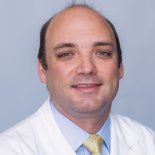
Liver transplantation can extend survival for some patients whose colorectal cancer has spread only to the liver. Robert Cannon, M.D., surgical director of UAB’s Liver Transplant Program, explains the selection criteria that determine whether these patients — until recently considered ineligible for transplant — may benefit. He also outlines the treatment progression and how physicians care for patients while they are on the transplant waiting list. Learn how the RAPID graft technique and UAB’s new living-donor program could make this option available to more patients.
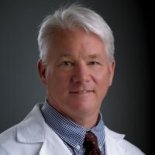
Surgeons in kidney transplantation are expanding their use of robotics, beginning with donor nephrectomy. Michael Hanaway, M.D., explains why robotic surgery will soon become the standard of care for donor nephrectomy and is expected to become common for kidney transplants within the next 10-15 years. Learn more about new capabilities on the horizon for robotic surgery.

Neurofibromatosis (NF) and Schwannomatosis can involve skin changes, hearing loss, vision issues, and nerve tumors, but may go unrecognized for years. Neuro-oncologists Katie Metrock, M.D., and Rebecca Brown, M.D., discuss how these two distinct genetic conditions are classified, how they typically present, and how newly approved MEK inhibitors are shaping treatment.

Tracheostomy complications can be dramatically reduced with structured follow-up care. Harishanker Jeyarajan, M.D., explains how a pandemic-era surge in tracheostomies prompted UAB to launch a quality improvement initiative to systematize post-placement care — leading to the only dedicated tracheostomy management clinic in Alabama. Learn from Maddie Golden, CRNP, and Jennifer Faulkner, PA-C, how their protocols and education efforts helped reduce tracheostomy-related visits by 43%.
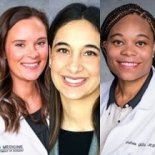
Thyroid nodules are common and usually benign, but deciding when and how to intervene is complex. Endocrine surgeons Andrea Gillis, M.D., and Sophie Dream, M.D., along with CRNP Kelly Lovell, explain how they distinguish low-risk cases from those needing treatment. Learn how they help patients choose between monitoring, thermal ablation, and surgery.

Primary care sports medicine has more tools than ever to keep athletes out of the operating room. Steven Brown, M.D., explains how this evolving field treats injuries, supports recovery, and helps prevent sport-specific injuries through whole-person care. Learn how ultrasound, orthobiologics, and training strategies are shaping nonsurgical treatment.

UAB’s adult ECMO program, which offers advanced heart and lung support, continues to expand in both reach and capability. Keith Willie, M.D., medical director of the ECMO and Advanced Lung Diseases Program, discusses technology that improves patient mobility, new referral partnerships, and the multidisciplinary care model behind each case. Learn how ECMO is used as a bridge to recovery, transplant, or decision.

Explore the collaborative efforts at UAB Medicine that make National Accreditation Program for Rectal Cancer (NAPRC) accreditation successful. Robert Hollis, M.D., MSPH, and Ridley Brown, BSN, RN, explain how teamwork among surgeons, oncologists, and nurses streamlines patient navigation and care, ensuring that every aspect of a patient’s journey is coordinated and efficient.
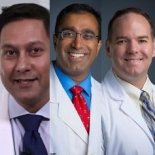
Managing pancreatitis often involves complex decisions about drainage, best made by a multidisciplinary team. Sushant Reddy, M.D., a pancreatic surgeon, joins Andrew Gunn, M.D., an interventional radiologist, and Ali Ahmed, M.D., an interventional gastroenterologist, to explain how their unified protocol helps avoid surgical drainage in most cases. They discuss acute vs. chronic cases, pseudocyst management, and evolving strategies for pain control and follow-up care.

Male infertility contributes to nearly half of all infertility cases. Peter Kolettis, M.D., a urologist, explains how detailed evaluations such as semen analysis and hormone testing help identify treatable causes. He discusses the latest procedures for sperm retrieval and vasectomy reversal, and how lifestyle choices can impact fertility.
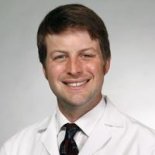
Partial breast radiation has become even safer and more precise for select patients with early-stage breast cancer. Hunter Boggs, M.D., a radiation oncologist, explains how modern partial breast radiation techniques reduce side effects without compromising outcomes. He also shares updated eligibility criteria for treatment.
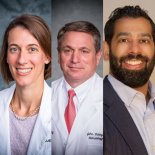
When uveal melanoma spreads to the liver, it’s difficult to treat with systemic therapies, but percutaneous hepatic perfusion (PHP) offers an alternative. In this panel discussion, Venkatesh Krishnasamy, M.D., Christy Broman, M.D., and John Dubay, M.D., explain how PHP delivers high-dose chemotherapy directly to the liver while minimizing toxicity. They walk through candidacy, recovery, and how this approach compares to surgery or immunotherapy. Learn how coordination across specialties makes this liver-directed therapy possible.
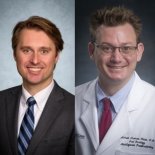
Not every patient is a candidate for traditional dental implants. Michael Case, D.M.D., and Jay Ponto, D.M.D., explain how today’s subperiosteal implants offer a custom alternative for patients with reduced bone volume, past tumor resection, or congenital conditions. Learn about the new subperiosteal implant approach, which uses a custom titanium framework that is preplanned, fixed in place, and can be fitted with teeth immediately after surgery.

Neuroendocrine tumors are rare and can present with a confusing range of symptoms, which leads to frequent misattribution. Jay Bart Rose, M.D., explains how they’re also complex to treat, often requiring multiple modalities based on tumor location and hormone activity. He discusses surgery, systemic therapies, and PRRT, a targeted treatment that uses the same receptor pathway as specialized imaging. Learn how UAB’s multidisciplinary neuroendocrine tumor clinic brings specialists together for long-term management.

Non-muscle invasive bladder cancer is common, recurrent, and often misunderstood. Urologist Jed Ferguson, M.D., and urologic oncologist Chaz Payton, M.D., explain how it differs from muscle invasive disease, why recurrence increases the risk of progression, and the complex factors that determine treatment sequencing. Learn about UAB’s clinical trials and emerging therapies that aim to preserve the bladder without compromising care.
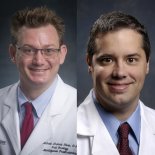
Radiation therapy for oral cancer requires both precise targeting and multidisciplinary coordination. Christopher Willey, M.D., and Michael Case, D.M.D., explain how close collaboration between radiation oncology and dental care helps prevent complications such as osteoradionecrosis and also minimizes treatment delays. They describe how pretreatment dental evaluations, oral hygiene protocols, and coordinated planning improve outcomes.

ACL tears are on the rise as more people remain active throughout their lives. Amit Momaya, M.D., chief of sports medicine, explains how today’s treatment approaches balance repair and reconstruction, with an emphasis on prehab, rehab, and psychological readiness. Learn about prevention strategies, retear risk factors, and surgical innovations being studied at UAB.
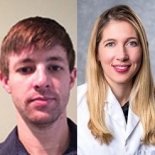
Are airbag vests protecting young equestrians or putting them at risk? Sports medicine physician Sarah Gould, M.D., and engineering research scientist Kevin Schrum discuss unexpected injuries linked to equestrian air vests. They explain how the vests function, why pediatric riders may be especially vulnerable to related injuries, and why stronger data is needed to determine whether these devices should be used.